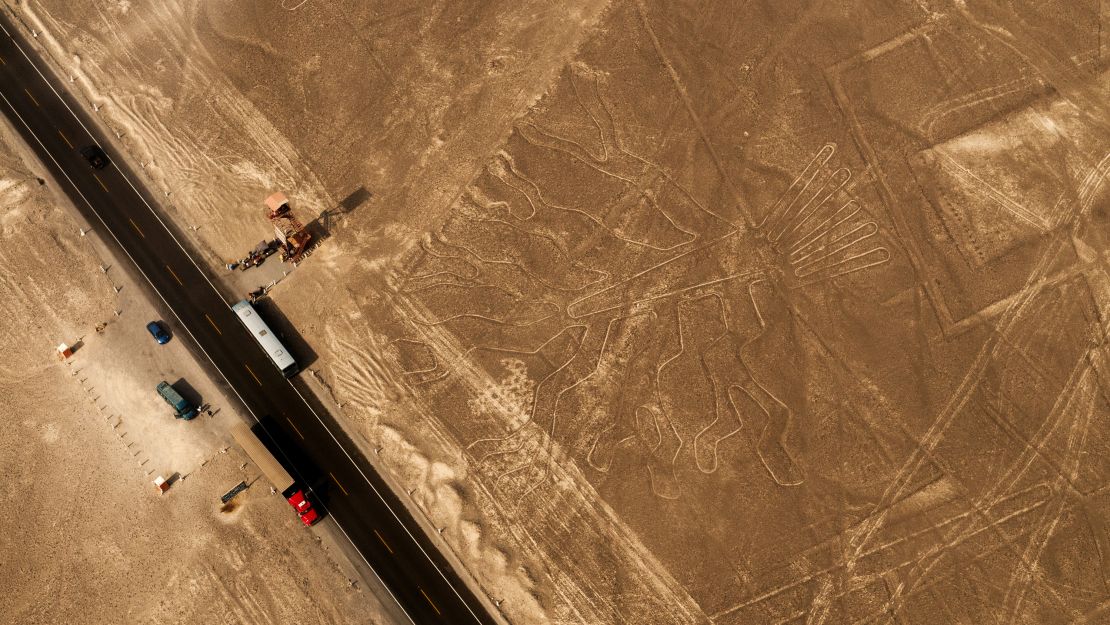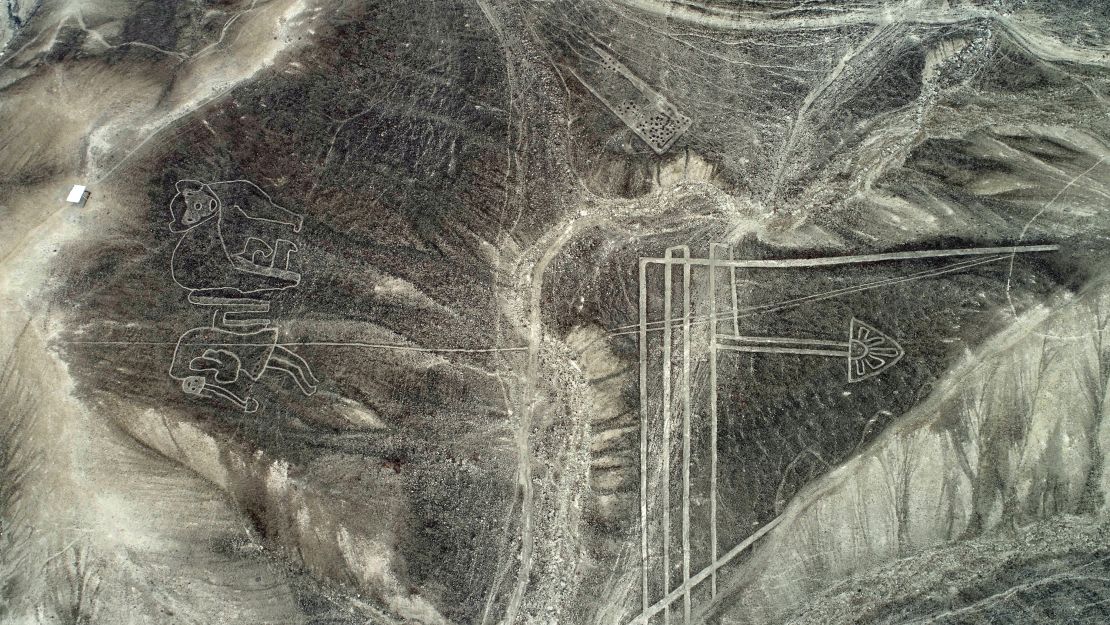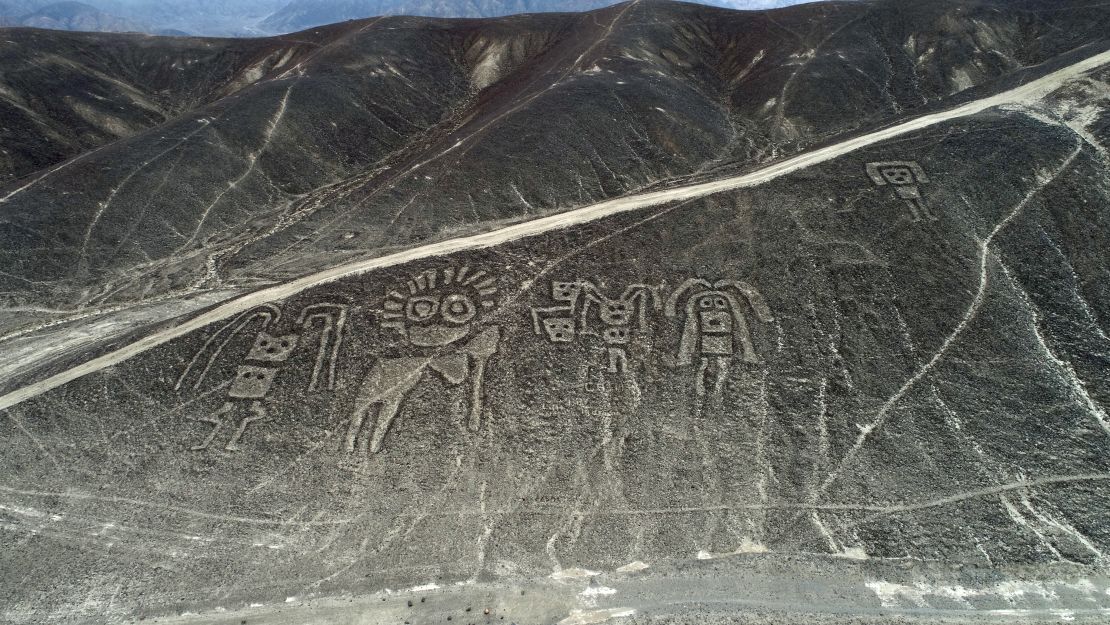Peru is home to Machu Picchu, one of the seven modern wonders of the world, which draws travelers from around the globe.
But if you ask any Peruvian, Machu Picchu is on equal footing with the Nazca Lines, the desert landscape feature in the southern part of the country.
From simple lines to geometric and zoomorphic shapes, these indentations are spread across the arid plateau of Pampas de Jumana, some stretching to 1,200 feet (about as long as the Empire State Building).
Even the national tourism board, PromPeru, uses shapes from the Nazca Lines on its official branding, with the P in Peru resembling one of the iconic swirls.
Despite their major historical significance, the number of visitors to the Lines is dwarfed by the amount who visit Machu Picchu or the capital city of Lima every year.
That means that you can get a specialized experience without having to shell out a lot of money, and you don’t need to spend several days hiking or getting accustomed to the altitude.
Here’s what you need to know.

So, what are they?
Part of what makes the Nazca Lines so fascinating are their mysteriousness. Though these geoglyphs in the sand were made around the first century CE, they were virtually unknown until the early 1900s. Plenty of theories abounded about how the lines got there and what they meant.
The Lines became a UNESCO World Heritage site in 1994. At the time, UNESCO wrote, “They are the most outstanding group of geoglyphs anywhere in the world and are unmatched in its extent, magnitude, quantity, size, diversity and ancient tradition to any similar work in the world.”
Different people see different things when they look at the Lines from the sky. Some of the formations have nicknames like The Sparrow, The Iguana and The Flower based on their shapes.
Though the Incas are probably the most famous pre-Columbian group who lived in what is now Peru, the Nazca people had a thriving civilization in the desert for hundreds of years.
The most and least exciting thing about the Nazca Lines is their relative simplicity. The lines are not dug deep into the ground – they’re simply made from the top layer of desert sand and could probably be recreated by a group of people in a few days.
The relative ease of making them makes it even more impressive that the Nazca Lines have remained intact for so long, inured to the heavy winds.
What do they mean?
“For a long while, many generations of Peruvians and the international community grew up learning that these lines referred to astronomical cycles, like constellations and movements of the stars,” explains Javier Puente, who is a specialist for the Incas Expert Guide travel company.
“But recent research has shown that that is not the case. They seem to be ritual-related and water-related.”
Puente, a Peru native who is now an associate professor of Latino/a History at Smith College in Massachusetts, has heard just about every Nazca Lines conspiracy theory out there.

“They were not drawn by aliens, that’s for sure,” he says. This theory has endured over time because many people believe some of the figures – in particular, one nicknamed The Astronaut – look anachronistic. But there was no fancy technology or intelligence needed to make them.
For desert people, water is everything – and many scholars believe that these pathways could have indicated where water sources were. It’s also possible they were elements of a spiritual practice, with people walking the same paths over and over again to deepen the lines.
How can I see them?
First, you’ll need to get to Peru. Fly into Lima, then drive or take a bus 400 km (250 miles) down the Pan-American Highway to the beachside town of Paracas.
This sunny surfer community recently hosted the sailing events during the 2019 Pan-American Games, and there are several nice hotels, including a DoubleTree by Hilton resort.
The best way to see the Nazca Lines is from the air. There are multiple daily flights, lasting about 75 minutes each, that depart from Pisco Airport.
If you’ve ever gotten frustrated by a long security line at an airport, Pisco is about to be your new favorite place. Despite being fully equipped with all the modern technology of an airport, Pisco is basically empty except for these Nazca flights. You can sail through check-in and security in about two minutes if you walk slowly.

However, the ease of the airport is balanced out by the challenges of the flight itself. Only about 10 to 12 people can fit on each plane, and everyone is guaranteed a window seat, so travelers who are tall or need a lot of leg room will find themselves feeling pretty cramped.
The desert is notoriously windy around the Lines, and on a small plane you’re more likely to feel every fluctuation. On top of that, the pilots will dive the plane low so that people on both sides can view different line formations and take pictures.
It feels a little bit like being on a stunt plane, and even the hardiest travelers will likely find themselves turning green. Invest heavily in your anti-nausea drug of choice before boarding, and look out for the plastic bags at every seat in case you need one.
Still, surviving the flight will only make you feel more like an intrepid explorer once you’re back on solid ground. Especially once you post the photos and have the bragging rights.
If you’re a nervous flier, there is another option – an observation tower. You won’t get to see as many of the formations, but it’s a solid Plan B, and one with less barfing involved.
Why should I go?
Like so many natural wonders around the world, the Nazca Lines could easily disappear within our lifetimes. Despite surviving thousands of years, the Lines could be easily swept away in a significant rainstorm, a risk in the age of climate crisis.
However, the biggest threat to the Nazca Lines are human beings.
“The danger is urbanization, road construction and modernity,” says Puente. “The Nazca Lines are more threatened from that than any natural reason.”
Perhaps it’s that impermanence – not the symbolism – that truly makes the Nazca Lines so magical.
When you use affiliate links on this page, CNN may receive revenue. CNN is not responsible for the goods or services provided through such links.









